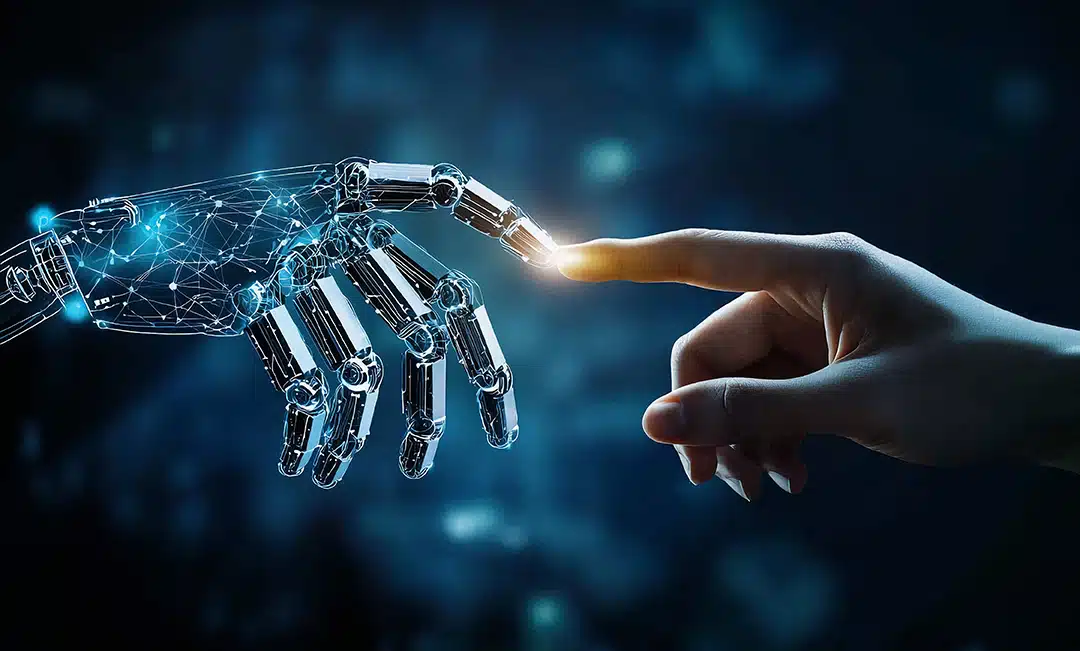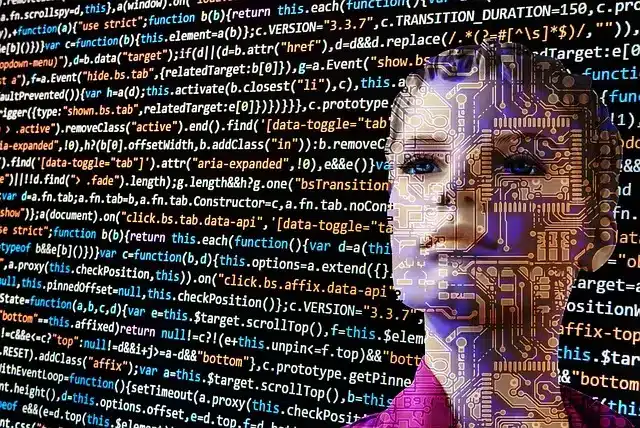Your Website Needs More Than AI — It Needs a Human Touch of a Web Designer
Artificial Intelligence is transforming nearly every industry — and web design is no exception. AI-powered tools can now generate websites in minutes, write code on command, and produce blog posts faster than you can pour your morning coffee. It’s tempting to believe that this means AI could replace the need for a professional human web designer entirely. However, AI is not always right — in fact, it can produce incorrect code, flawed layouts, or content that doesn’t align with your brand or audience. In web design, these inaccuracies can create broken features, poor user experiences, or even SEO penalties if not caught and corrected. While AI can assist with certain tasks, relying on it alone can leave you with a website that looks fine on the surface but has hidden problems that only human expertise can anticipate and fix.
Here’s the truth: while AI is a powerful “assistant”, it’s not a replacement for human creativity, insight, and strategic thinking. If you want a website that connects, converts, and stands out in a crowded online world, you still need the human touch.
The Role and Growth of AI in Web Development
Today’s AI-powered web design tools — from automated website builders like Wix ADI to advanced language models such as ChatGPT — are undeniably impressive. These platforms can take a few basic prompts and generate a functional website in minutes, giving the illusion of instant success.
AI can:
- Create ready-made templates based on industry or style preferences
- Generate website content like product descriptions, service pages, and blog posts
- Write code snippets for common features such as contact forms, sliders, or navigation menus (see more below)
- Resize and optimize images for faster page load times
- Analyze basic user behavior data to recommend layout adjustments
For business owners exploring DIY web design, AI-powered features can feel like a dream — quick, low-cost, and seemingly hassle-free. From generating code snippets to producing blog content in minutes, these tools promise speed and convenience. For web developers, AI can even speed up parts of the process, reduce trial and error, and provide inspiration for solving tricky coding challenges.
The presence of AI in the web design and development industry is expanding at a remarkable pace. Recent data shows the AI market is projected to grow by over 37% annually between 2023 and 2030, potentially reaching $126 billion by 2025. (Original market statistics sourced from SEO A2Z)
It’s no surprise that design teams are increasingly incorporating AI into their workflows:
-
20% use AI to analyze user experience data and identify improvement opportunities
-
58% use AI tools to create and enhance imagery for websites
-
40% rely on AI to assess the quality of design work
-
50% incorporate AI into the process of creating web page layouts
-
49% evaluate their overall design strategies using AI-powered insights
-
43% use AI for ongoing design optimization
These statistics highlight just how integrated AI has become in shaping the way websites are built, tested, and refined. But even with this growth, it’s unlikely that AI will fully replace the human side of web design in the coming decade. AI may automate portions of layout creation, code generation, and SEO analysis, but creativity, critical thinking, and user empathy remain distinctly human strengths.
But it’s important to remember that while these tools can create the framework of a website, they can’t replicate the insight, creativity, strategy, and most importantly, SEO integration that come from working with a skilled human web designer. A visually stunning website might impress you at launch, but if it isn’t optimized for search engines, your audience may never find it.
SEO integration isn’t just sprinkling in a few keywords — it’s a comprehensive approach that starts during the planning phase and continues long after launch. It means structuring your site so search engines can easily crawl and index it, crafting meta titles and descriptions that drive clicks, ensuring your pages load quickly, creating mobile-friendly layouts, and developing content that answers the questions your audience is actually asking. It is also one of our specialties here at Accent Graphix, read our Case Study of how we increased traffic by 200% with our comprehensive SEO analysis and overhaul.
Without this foundation, even the most beautiful website is like a billboard hidden in the woods — it might look great, but no one will see it.
This is where an experienced human web designer makes the difference: not just designing for aesthetics, but designing for visibility, traffic, and conversions. AI can suggest keywords or generate basic SEO copy, but it lacks the ability to research your competitors, understand your market, and adapt strategies as search algorithms evolve.
When AI Becomes an Asset: Coding Assistance
One of the most helpful uses of AI in web development is code generation. Let’s say a developer needs a responsive pricing table or a specific animation effect. Instead of building it from scratch, they can use a tool like ChatGPT to draft the initial HTML, CSS, or JavaScript. This jump-starts the process, saving valuable time.
AI can:
- Suggest code snippets for specific functionality
- Debug simple issues by identifying syntax errors
- Offer multiple approaches to solve a technical problem
However — and this is critical — AI doesn’t understand the full context of your brand, your audience, or your site’s goals. That’s where human implementation becomes essential.
The generated code might look fine in isolation, but integrating it seamlessly into your website requires experience:
- Ensuring compatibility with your site’s existing framework
- Adjusting the design so it matches your brand’s style guide
- Testing across multiple browsers and devices
- Making strategic decisions about user experience and accessibility
Without human oversight, AI-generated code can lead to bloated, inefficient, or even broken websites.
Why Human Implementation Matters Most
AI is trained on patterns, not people. It can mimic design trends, but it doesn’t actually experience the world the way your audience does.
When a human web designer works on your site, they bring:
- Audience Awareness – Understanding the emotional triggers, pain points, and preferences of your target customers.
- Brand Consistency – Aligning colors, typography, and messaging to your unique identity.
- Storytelling Ability – Crafting a journey through the site that makes visitors feel something.
- Problem-Solving Skills – Navigating real-world technical challenges that AI can’t anticipate.
- Empathy – Designing with the end-user’s convenience and satisfaction in mind.
Ultimately, your website’s audience is human — and humans connect with authenticity, nuance, and personality.
The Risks of an AI-Only Website
While an AI-generated website may be quick and inexpensive, it comes with significant drawbacks that can cost you far more in the long run:
Generic Designs – AI relies heavily on pre-built templates and existing design patterns. While these may look clean and professional at first glance, they often lack the originality needed to make your brand stand out. Visitors can instantly recognize a “cookie-cutter” site, and in competitive industries, blending in is the fastest way to be forgotten.
SEO Shortcomings – AI might be able to suggest keywords, but it doesn’t truly understand your competitors’ strengths and weaknesses, your local search landscape, or the nuances of search intent. Without a tailored, ongoing SEO strategy, your site can quickly slide down the rankings as trends shift and algorithms change — leaving you invisible to potential customers.
Lack of Strategic Direction – AI doesn’t think about your broader marketing goals. It won’t map your website to your sales funnel, plan calls-to-action with conversion psychology in mind, or ensure that each page is intentionally guiding visitors toward becoming paying clients. The result? Lots of “stuff” on your site, but no clear purpose driving results.
Limited Problem Resolution – When a plugin breaks, a page layout glitches, or a feature stops working after an update, AI can’t step in and troubleshoot in real time. A human developer can identify root causes, test solutions, and create custom fixes. AI-generated websites often leave you stranded when problems arise, especially if you don’t have the technical expertise to step in yourself.
Poor User Experience (UX) – AI can build something functional, but it doesn’t have the ability to walk through the site as a real user would. That means it may overlook accessibility requirements, mobile responsiveness, or the flow of information — leading to frustrated visitors who click away.
Security Risks – Many AI website builders use shared hosting environments or generic frameworks, which can leave your site more vulnerable to hacking and data breaches. Without proactive security measures from a human developer, your business and customer information could be at risk.
No Real Brand Voice – AI-generated content is based on patterns from existing text, not a deep understanding of your unique brand personality. Without a human writer or designer shaping your messaging, your website can sound flat, generic, or even identical to your competitors.
The result? You get a site that might look decent on the surface, but underperforms where it matters most — attracting traffic, engaging visitors, and converting them into loyal customers.
The Best of Both Worlds: AI + Human Expertise
AI isn’t the enemy. The most innovative web developers are using AI to enhance their work — not replace it.
At Accent Graphix, we integrate AI tools into our workflow for efficiency — not as a replacement for human skill, but as an enhancer. AI allows us to streamline certain tasks so we can devote more time to strategy, creativity, and personalized solutions for our clients.
We may use AI to:
- Draft a section of code before refining it manually – AI can quickly generate a starting point for custom features, saving valuable development time. We then fine-tune, optimize, and integrate that code so it works seamlessly with your site’s framework and brand style.
- Get fresh ideas for layout options or UX improvements – By prompting AI for design concepts or interface tweaks, we can explore multiple creative directions before selecting and customizing the one that best fits your audience and goals.
- Speed up repetitive design tasks so we can focus on creativity – AI helps with tasks like image resizing, color palette exploration, and formatting, allowing us to put more energy into the conceptual, brand-driven work that makes your website unique.
- Generate content outlines or starter copy for web pages and blogs – We use AI to create a rough structure for content, then refine it with our own expertise to ensure it’s on-brand, accurate, and SEO-optimized.
- Assist with keyword research and SEO strategy – AI tools can analyze trends and suggest keyword opportunities, which we then evaluate, refine, and implement in a way that aligns with your overall marketing plan.
- Automate parts of the testing and debugging process – AI can flag potential issues in code or layout, allowing us to fix problems faster and maintain a smooth, user-friendly experience.
- Enhance accessibility – We can use AI tools to check for potential accessibility improvements, ensuring your website is usable for all visitors, regardless of ability.
By leveraging AI for these tasks, we can deliver faster turnarounds, explore more creative possibilities, and maintain high standards of quality — all while keeping the final decisions, design choices, and strategic direction firmly in human hands.
Used individually — as supplemental tools to support the human manual labor of web development — AI can be incredibly efficient and valuable. It excels at enhancing specific parts of the process, from generating code snippets to suggesting design optimizations. But when AI is tasked with handling an entire project from start to finish — “design my website, incorporate all of these features, and then publish it” — the results will fall short. For long-term projects, complex builds, or brand-driven websites, AI lacks the adaptability, creativity, and strategic oversight needed to deliver a polished, cohesive, and high-performing final product.
But the final design, strategy, and implementation? That’s all human.
As we mentioned above, a skilled web designer takes the time to understand your brand, your audience, and your goals before making a single design choice. They craft design layouts that not only look visually appealing but also guide visitors through your site in a logical, conversion-focused way.. Strategy comes into play with every decision — from selecting the right color palette to creating a content hierarchy that emphasizes your most important offerings. Implementation ensures every element works seamlessly across devices and browsers, with careful testing to catch any issues before launch.
And woven throughout the entire process is SEO integration — structuring pages so search engines can easily index them, writing compelling meta titles and descriptions, optimizing images for speed, and ensuring your content speaks directly to your target audience’s search intent. It’s the combination of creative vision, technical skill, and marketing insight that transforms a simple website into a powerful business asset.
This hybrid approach means you get the speed and innovation of AI, combined with the precision, creativity, and strategic thinking that only an experienced designer can deliver.
Final Takeaway: Your Website Deserves More Than Automation
AI can help build a website, generating templates, basic content, and even functional code.

A human designer brings the creative vision to craft a unique look and feel, the development expertise to ensure flawless functionality, and the strategic insight to guide visitors through a seamless journey from first click to conversion.
Most importantly, they create a site that connects with people on an emotional level, tells your brand’s story with authenticity, and is tailored to meet your specific business goals rather than relying on a generic, one-size-fits-all solution.
So before you settle for a one-size-fits-all AI template, remember:
Your audience isn’t a robot. Your website shouldn’t be, either.
Ready for a site that blends the best of technology with the best of human creativity? Let’s talk.





